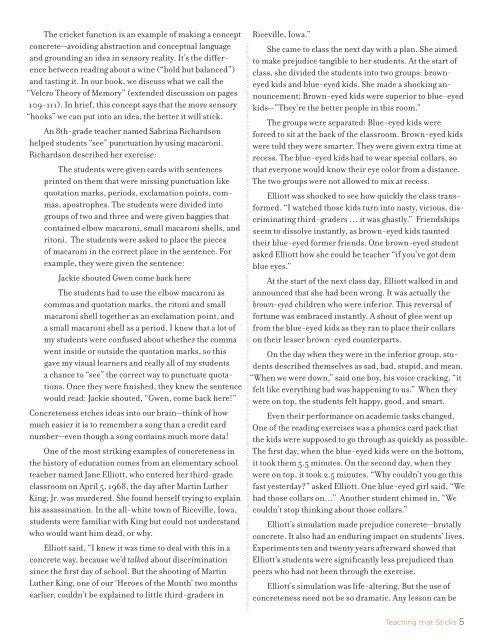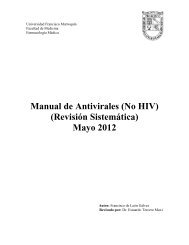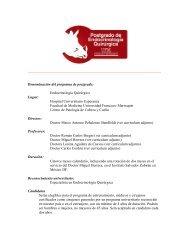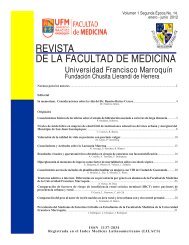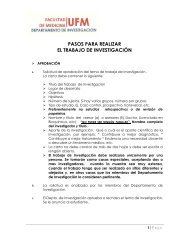Teaching That Sticks (pdf)
Teaching That Sticks (pdf)
Teaching That Sticks (pdf)
- No tags were found...
Create successful ePaper yourself
Turn your PDF publications into a flip-book with our unique Google optimized e-Paper software.
The cricket function is an example of making a concept<br />
concrete—avoiding abstraction and conceptual language<br />
and grounding an idea in sensory reality. It’s the difference<br />
between reading about a wine (“bold but balanced”)<br />
and tasting it. In our book, we discuss what we call the<br />
“Velcro Theory of Memory” (extended discussion on pages<br />
109-111). In brief, this concept says that the more sensory<br />
“hooks” we can put into an idea, the better it will stick.<br />
An 8th-grade teacher named Sabrina Richardson<br />
helped students “see” punctuation by using macaroni.<br />
Richardson described her exercise:<br />
The students were given cards with sentences<br />
printed on them that were missing punctuation like<br />
quotation marks, periods, exclamation points, commas,<br />
apostrophes. The students were divided into<br />
groups of two and three and were given baggies that<br />
contained elbow macaroni, small macaroni shells, and<br />
ritoni. The students were asked to place the pieces<br />
of macaroni in the correct place in the sentence. For<br />
example, they were given the sentence:<br />
Jackie shouted Gwen come back here<br />
The students had to use the elbow macaroni as<br />
commas and quotation marks, the ritoni and small<br />
macaroni shell together as an exclamation point, and<br />
a small macaroni shell as a period. I knew that a lot of<br />
my students were confused about whether the comma<br />
went inside or outside the quotation marks, so this<br />
gave my visual learners and really all of my students<br />
a chance to “see” the correct way to punctuate quotations.<br />
Once they were finished, they knew the sentence<br />
would read: Jackie shouted, “Gwen, come back here!”<br />
Concreteness etches ideas into our brain—think of how<br />
much easier it is to remember a song than a credit card<br />
number—even though a song contains much more data!<br />
One of the most striking examples of concreteness in<br />
the history of education comes from an elementary school<br />
teacher named Jane Elliott, who entered her third-grade<br />
classroom on April 5, 1968, the day after Martin Luther<br />
King, Jr. was murdered. She found herself trying to explain<br />
his assassination. In the all-white town of Riceville, Iowa,<br />
students were familiar with King but could not understand<br />
who would want him dead, or why.<br />
Elliott said, “I knew it was time to deal with this in a<br />
concrete way, because we’d talked about discrimination<br />
since the first day of school. But the shooting of Martin<br />
Luther King, one of our ‘Heroes of the Month’ two months<br />
earlier, couldn’t be explained to little third-graders in<br />
Riceville, Iowa.”<br />
She came to class the next day with a plan. She aimed<br />
to make prejudice tangible to her students. At the start of<br />
class, she divided the students into two groups: browneyed<br />
kids and blue-eyed kids. She made a shocking announcement:<br />
Brown-eyed kids were superior to blue-eyed<br />
kids—”They’re the better people in this room.”<br />
The groups were separated: Blue-eyed kids were<br />
forced to sit at the back of the classroom. Brown-eyed kids<br />
were told they were smarter. They were given extra time at<br />
recess. The blue-eyed kids had to wear special collars, so<br />
that everyone would know their eye color from a distance.<br />
The two groups were not allowed to mix at recess.<br />
Elliott was shocked to see how quickly the class transformed.<br />
“I watched those kids turn into nasty, vicious, discriminating<br />
third-graders … it was ghastly.” Friendships<br />
seem to dissolve instantly, as brown-eyed kids taunted<br />
their blue-eyed former friends. One brown-eyed student<br />
asked Elliott how she could be teacher “if you’ve got dem<br />
blue eyes.”<br />
At the start of the next class day, Elliott walked in and<br />
announced that she had been wrong. It was actually the<br />
brown-eyed children who were inferior. This reversal of<br />
fortune was embraced instantly. A shout of glee went up<br />
from the blue-eyed kids as they ran to place their collars<br />
on their lesser brown-eyed counterparts.<br />
On the day when they were in the inferior group, students<br />
described themselves as sad, bad, stupid, and mean.<br />
“When we were down,” said one boy, his voice cracking, “it<br />
felt like everything bad was happening to us.” When they<br />
were on top, the students felt happy, good, and smart.<br />
Even their performance on academic tasks changed.<br />
One of the reading exercises was a phonics card pack that<br />
the kids were supposed to go through as quickly as possible.<br />
The first day, when the blue-eyed kids were on the bottom,<br />
it took them 5.5 minutes. On the second day, when they<br />
were on top, it took 2.5 minutes. “Why couldn’t you go this<br />
fast yesterday?” asked Elliott. One blue-eyed girl said, “We<br />
had those collars on…” Another student chimed in, “We<br />
couldn’t stop thinking about those collars.”<br />
Elliott’s simulation made prejudice concrete—brutally<br />
concrete. It also had an enduring impact on students’ lives.<br />
Experiments ten and twenty years afterward showed that<br />
Elliott’s students were significantly less prejudiced than<br />
peers who had not been through the exercise.<br />
Elliott’s simulation was life-altering. But the use of<br />
concreteness need not be so dramatic. Any lesson can be<br />
<strong>Teaching</strong> that <strong>Sticks</strong> 5


